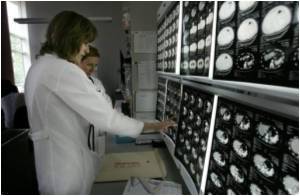Investigators at Vanderbilt-Ingram Cancer Center and the National Institutes of Health (NIH) identify the long list of aging-associated proteins known to be involved in cancer.

"It seems logical that the genes that play a role in aging – or perhaps better stated, anti-aging – would be connected to cancer." While at the NIH's National Cancer Institute, Gius and colleagues found that when they eliminated SIRT3 – a sirtuin localized in the mitochondria, the cellular "power plants" – the mice developed ER/PR positive breast tumors, the most common type of breast cancer in postmenopausal women.In the new study, Gius' lab – working with senior author Chu-Xia Deng, Ph.D., and colleagues at the NIH's National Institute of Diabetes and Digestive and Kidney Diseases – investigated the physiological functions of SIRT2 by eliminating the protein in cultured cells and in mice.
They found that SIRT2-deficient mice developed tumors in multiple tissues – and, strangely, male mice and female mice developed tumors in different tissues. Lack of SIRT2 in female mice led to mammary (breast) tumors, while male mice lacking SIRT2 developed a range of gastrointestinal tumors (in the liver, pancreas, colon and stomach). "It's kind of a startling observation, that you'd knock a protein out, and you'd get gender-specific tumors, suggesting a physiological connection between gender and the function of sirtuin proteins" Gius said. From human cancer data, the investigators showed that SIRT2 was also decreased in human cases of breast cancer, gastrointestinal tumors (which were not broken down by gender), and several other cancer types.
While the mechanism underlying the gender-specific tumors was not determined, the researchers did find evidence that SIRT2 acted as a tumor suppressor in cultured cells. Specifically, the protein appeared to regulate an important part of the machinery involved in cell division – a protein complex called APC/C. Loss of SIRT2 led to "genomic instability," or an abnormal segregation of chromosomes during cell division. While the cells at first showed reduced proliferation, their growth rate gradually increased and the cells showed signs of malignant transformation. Previous studies indicated that two other members of the sirtuin family – SIRT1 and SIRT3 – have tumor suppressor functions. These findings suggest that a third member of this protein family acts as a tumor suppressor.
"You don't normally find families of tumor suppressor genes," Gius said. "They're kind of lone wolves…it's just not common to find a family of (tumor suppressor) genes, especially ones connected to aging."Because the mammary tumors that develop in female mice appear similar to the most common type of breast cancer (luminal breast cancers), Gius believes these mice could provide a much-needed animal model for that disease. His group plans to investigate whether SIRT2 is a "driver" of luminal breast cancer and, if so, to use the mice as a model for investigating chemopreventive agents. "Ultimately, we could possibly identify subgroups of women who might benefit from the agents we validate in mice," he said.
Source-Eurekalert












